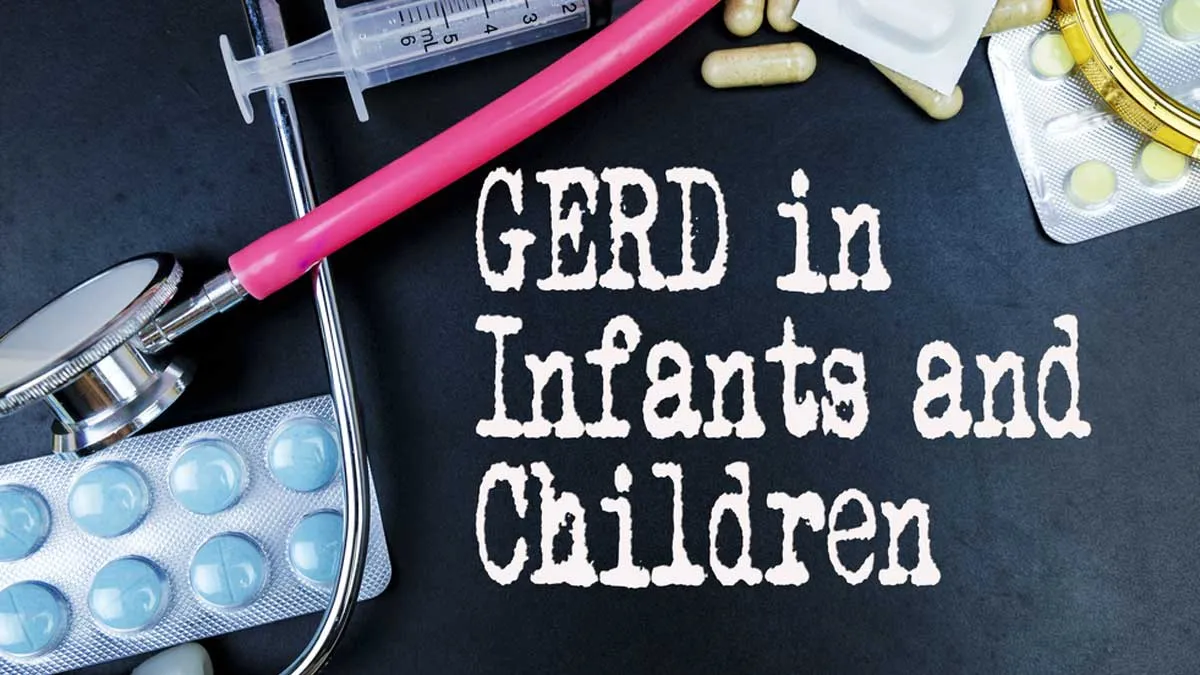
It’s not uncommon for parents to bring in their babies or toddlers with complaints of frequent spitting up, irritability after feeds, or poor weight gain. Often, they’ve already tried changing formulas, burping techniques, or feeding schedules, but the symptoms persist. While occasional reflux is normal in infants, persistent or severe symptoms could point to something more: Gastroesophageal Reflux Disease, or GERD.
Table of Content:-
Unfortunately, in children, especially infants, reflux is frequently brushed off as a passing phase. And while it does often resolve with age, there are cases where ongoing reflux can affect nutrition, development, and even breathing. That’s where early attention becomes critical.
We spoke to Dr Adarsh CK, Chief Consultant Gastroenterologist and Hepatologist, Gleneagles BGS Hospital, Kengeri, Bengaluru, who explained this condition, its symptoms, red flags, and treatment options.
What’s Normal and What’s Not?

“Most newborns have some degree of reflux, especially in the first few months of life. Their digestive system is still maturing, and the muscle between the oesophagus and the stomach, the lower oesophageal sphincter, isn’t always strong enough to keep stomach contents down. This can lead to occasional spit-ups, especially after feeds or when lying down,” explained Dr Adarsh.
According to the North American Society for Pediatric Gastroenterology, Hepatology and Nutrition (NASPGHAN), more than 50% of healthy infants experience gastroesophageal reflux during the first three months of life, typically peaking at 4 months and resolving by 12 months. This is often due to the immaturity of the lower Oesophageal Sphincter (LES), which allows stomach contents to move back into the oesophagus.
However, it’s time to consider that it may be more than just 'normal baby spit-up', if reflux becomes frequent, painful, or is accompanied by symptoms like:
- Difficulty feeding or refusal to eat
- Excessive crying or arching of the back
- Poor weight gain
- Chronic cough or wheezing
- Vomiting with blood or green bile
Also Read: Acidity Vs Bloating: How To Tell The Difference And What To Eat For Each
Causes Of Rising Cases
There’s no single reason, but we do suspect several contributing factors. First, more parents are aware of reflux symptoms today and are seeking help sooner. Secondly, changes in feeding patterns, including increased reliance on formula, early introduction of solids, and upright positioning in car seats, can all influence reflux tendencies.
“In older children, poor dietary habits, increased screen time during meals, obesity, and a sedentary lifestyle may be making reflux more common. Spicy, fried, or highly processed foods, often found in lunchboxes or evening snacks, can trigger symptoms that weren’t as prevalent a generation ago.
Diagnosing GERD in infants and young children can be tricky, as they can’t articulate their discomfort. That’s why parental observations, especially patterns, are vital for a clinical diagnosis,” added Dr Adarsh.
How Do We Evaluate It?
In most cases, we begin with a detailed history and physical exam. For infants, we often trial simple changes before moving to tests. These include:

- Modifying feeding positions (more upright)
- Smaller, more frequent feeds
- Thickening milk with prescribed thickeners (under supervision)
- Ensuring the baby stays upright after feeding
If symptoms persist or worsen, tests, such as a pH probe study, upper Gastrointestinal Tract (GI) series, or an endoscopy may be needed, especially in older children where reflux-related complications are suspected.
Also Read: Can Powdered Milk Affect Your Child's Health? Expert Answers
Do All Kids Need Medication?
Many infants outgrow reflux by 12–18 months as their digestive system matures. For them, conservative measures are often enough. But for children with GERD, especially those with complications, medication may be necessary.
“We usually begin with acid-suppressing drugs like Proton Pump Inhibitors (PPIs) or H2 blockers. This helps reduce acid production, allowing the oesophagus to heal and easing discomfort. But we use them judiciously, and always with close monitoring. It’s also important to treat underlying triggers. For instance, in school-age children, constipation is a surprisingly common aggravator of reflux. Correcting that alone can improve symptoms significantly,” said Dr Adarsh.
Lifestyle and Diet Matter More Than We Think
For older children, lifestyle plays a big role in both the onset and treatment of reflux. Late-night meals, lying down immediately after eating, overeating, or excess consumption of aerated drinks can all worsen symptoms. Encouraging children to eat slowly, chew well, and maintain regular meal times can go a long way.
A reflux-friendly diet may include:
- Whole grains, fruits, and vegetables
- Cooked rather than fried foods
- Reduced intake of acidic items like tomatoes and citrus fruits (if they trigger symptoms)
- Limiting processed snacks, chocolates, and colas
- Also, encouraging movement and cutting back on screen time can improve digestion and reduce reflux frequency
Bottomline
Dr Adarsh concluded, “Gastric reflux in children is more than a minor inconvenience. When left unrecognised or untreated, it can affect nutrition, growth, and even emotional well-being. The good news is, with timely care, often starting with something as simple as feeding advice or posture correction, most children improve significantly.”
“As specialists, our message to caregivers is clear: Don’t hesitate to ask questions or raise concerns, even if they seem minor. What looks like “normal spit-up” could be the early sign of a problem that’s entirely manageable, if caught in time,” he added.
[Disclaimer: This article contains information for informational purposes only. Hence, we advise you to consult your professional if you are dealing with any health issue to avoid complications.]
Also watch this video
Read Next
Chia Seeds For Kids: Are They Safe?
How we keep this article up to date:
We work with experts and keep a close eye on the latest in health and wellness. Whenever there is a new research or helpful information, we update our articles with accurate and useful advice.
Current Version
